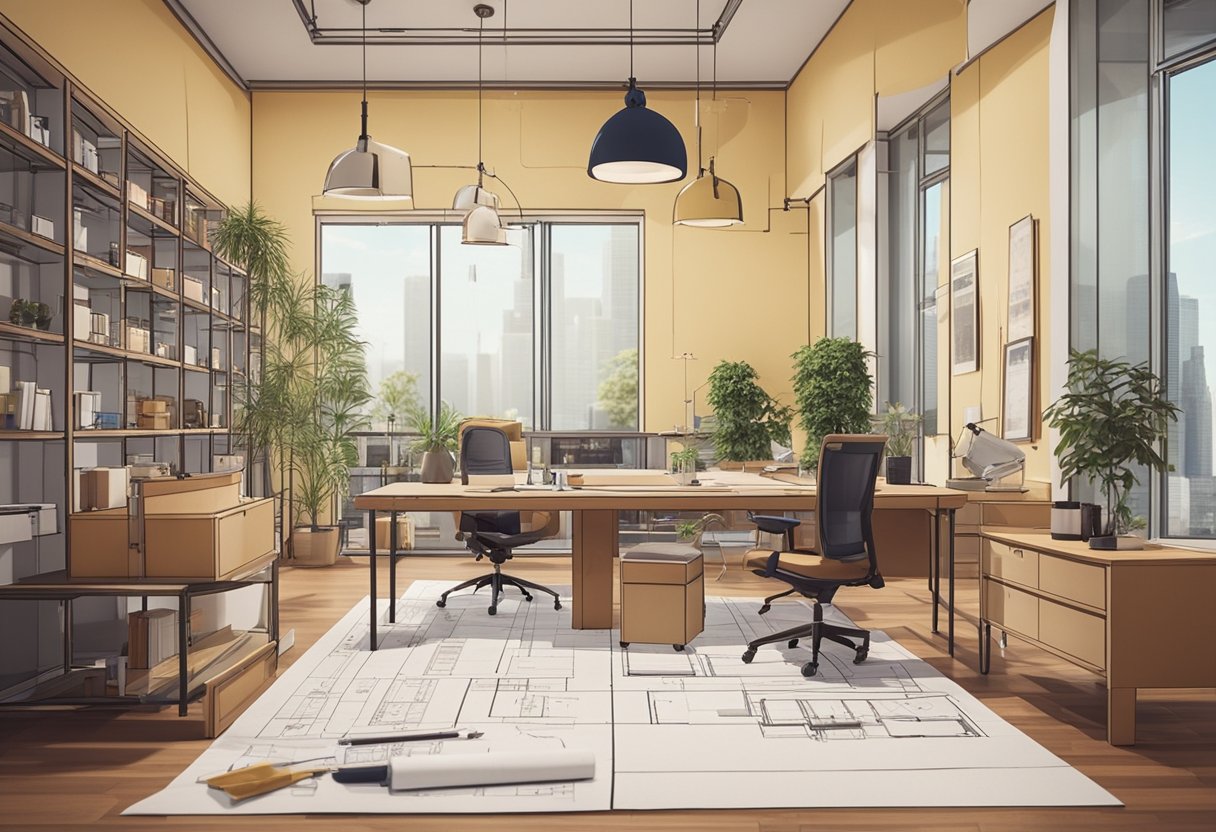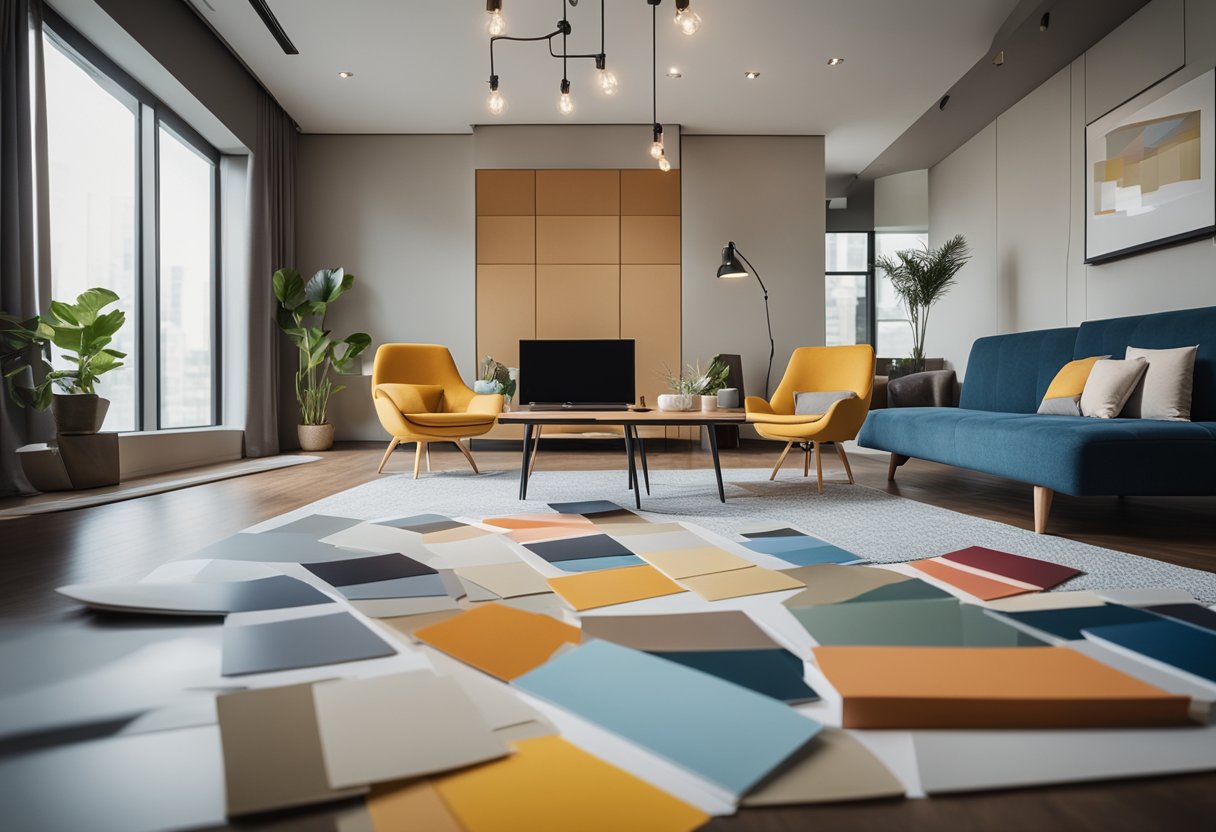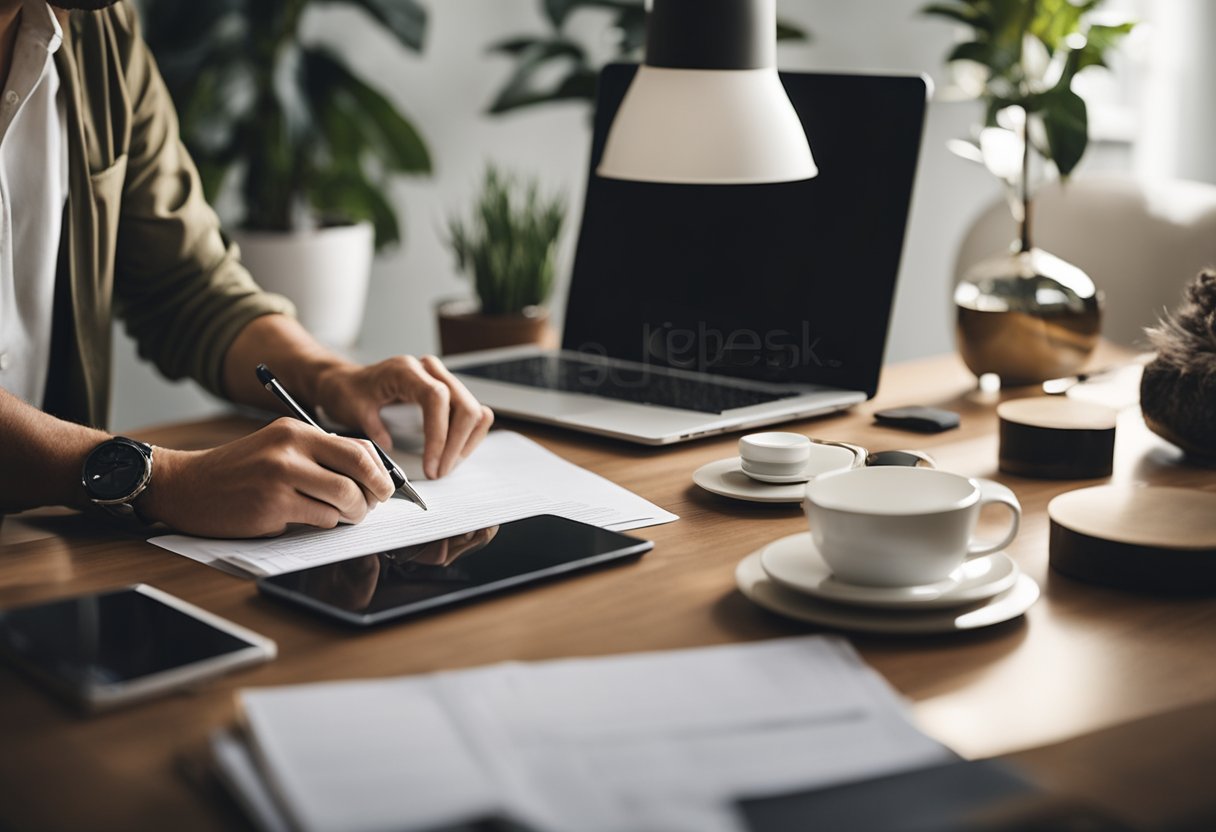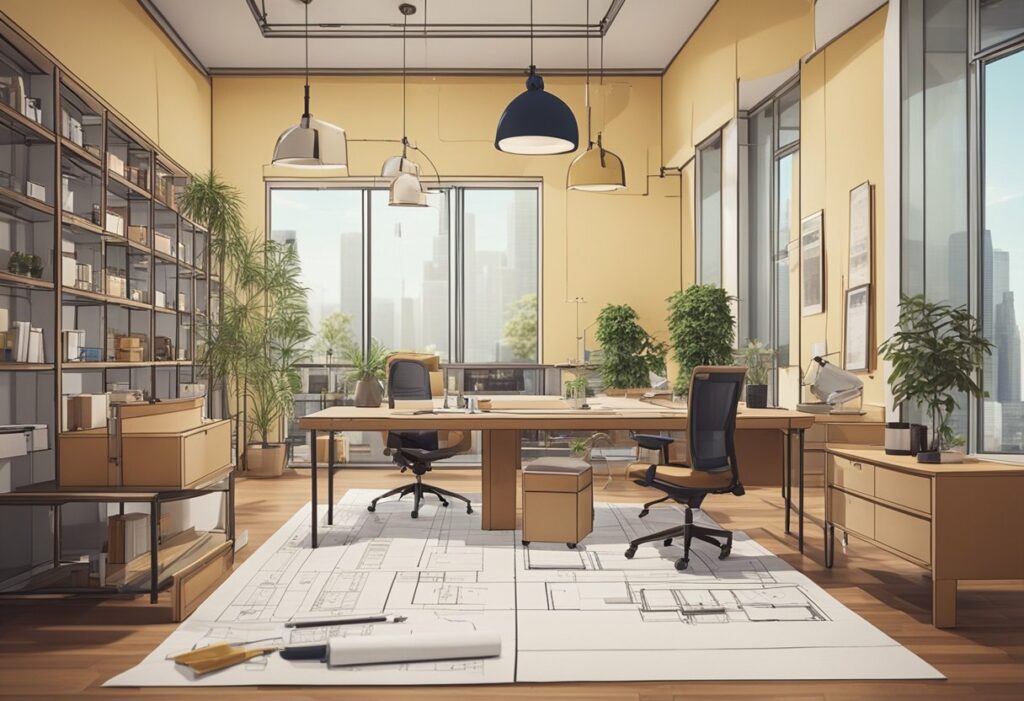Interior Design Procedure: A Step-by-Step Guide to Transforming Your Space
Are you planning to renovate your home or office space? If so, you’re probably wondering about the interior design procedure. Interior design is the art and science of enhancing the interior of a building to achieve a healthier and more aesthetically pleasing environment. The procedure involves several steps that need to be carefully planned and executed to achieve the desired outcome.

The foundations of interior design are based on the principles of art and aesthetics. Interior designers use a variety of elements such as colour, texture, pattern, and lighting to create a cohesive and functional space. Designers also take into consideration the client’s needs, budget, and personal style to create a space that is unique and tailored to their needs.
Key Takeaways
- Interior design is the art and science of enhancing the interior of a building to achieve a healthier and more aesthetically pleasing environment.
- The foundations of interior design are based on the principles of art and aesthetics.
- Interior designers use a variety of elements such as colour, texture, pattern, and lighting to create a cohesive and functional space.
Foundations of Interior Design

As an interior designer, you understand the importance of creating a space that is both functional and aesthetically pleasing. The interior design process involves several steps, each of which plays a crucial role in creating a successful design. The foundations of interior design can be broken down into several subsections.
Understanding Client Needs
The first step in the interior design process is understanding your client’s needs. This involves consultation and onboarding to get a clear idea of what your client is looking for. You need to gather feedback from your client to ensure that you are meeting their needs and expectations. This will help you develop a design concept that meets the client’s needs while also reflecting their personal style and aesthetic.
Concept Development
Once you have a clear understanding of your client’s needs, it’s time to start developing a design concept. This involves creating mood boards and visual aids to help your client visualise the design. You need to consider design principles such as functionality, balance, unity, rhythm, repetition, and proportion to create a cohesive and visually appealing design.
Planning and Project Management
The next step is planning and project management. This involves creating a timeline, budget, and sourcing vendors and contractors. You need to ensure that the project is completed within the agreed timeline and budget. Effective project management is crucial to the success of any interior design project.
Design and Documentation
Once you have a solid plan in place, it’s time to start designing and documenting the project. This involves creating floor plans, renderings, and space planning. You also need to document the design with schematic design, interior elevations, and reflected ceiling plans.
Material and Finish Selection
Material and finish selection is an important part of the design process. You need to select materials and finishes that are both functional and aesthetically pleasing. This includes selecting flooring, paint colours, tile, cabinetry, and lighting.
Technical Considerations
Technical considerations such as construction, plumbing, permits, site visits, safety, regulations, and accessibility are also important factors to consider in the interior design process. You need to ensure that the design meets all safety and accessibility regulations.
Furniture and Accessories
Furniture and accessories are important elements of any interior design project. You need to select furniture, fixtures, and accessories that are both functional and aesthetically pleasing. This includes selecting furnishings, accessories, artwork, and decor.
Sustainable Practices
Sustainability and eco-friendly design are becoming increasingly important in the interior design industry. You need to consider energy efficiency and green design in your design process. This includes selecting sustainable materials and finishes and incorporating energy-efficient lighting and appliances.
Visual Communication
Visual communication is an important part of the interior design process. This includes creating 3D models, Pinterest boards, and photographs to help your client visualise the design.
Collaboration and Coordination
Collaboration and coordination are essential in the interior design process. You need to work closely with other stakeholders such as interior designers, general contractors, vendors, and clients to ensure that the project is completed successfully.
Execution and Review
The execution and review stage involves overseeing the installation of the design and ensuring that the final touches are in place. You need to ensure that quality control is maintained throughout the project and that the client is satisfied with the final result.
Client Experience
The client experience is an important part of the interior design process. You need to ensure that the client is satisfied with the project from start to finish. This includes onboarding, feedback, and offboarding processes to ensure that the client’s needs are met and that they are happy with the final result.
In summary, the foundations of interior design involve several steps and considerations, including understanding client needs, concept development, planning and project management, design and documentation, material and finish selection, technical considerations, furniture and accessories, sustainable practices, visual communication, collaboration and coordination, execution and review, and client experience. By following these steps and considering these factors, you can create a successful interior design project that meets your client’s needs and exceeds their expectations.
Post-Project Completion

Congratulations, you have successfully completed your interior design project! Your hard work and dedication have paid off, and now it’s time to evaluate the project and plan for your future growth. Here are some key areas to focus on:
Project Evaluation
Take time to reflect on the project and evaluate your performance. Review your processes, efficiency, productivity, and overall experience. Seek feedback from your clients and team members to identify areas for improvement. Use this feedback to refine your workflow, templates, tools, and resources. Establish standards and consistency to ensure quality checks and best practices are followed.
Professional Growth
Continue your professional development by attending seminars, webinars, and trade shows. Network with other designers and get involved in your community. Seek out industry partnerships and collaborations to expand your portfolio and brand. Stay up-to-date with industry trends and continuing education to inspire your creativity and experimental design.
Client Offboarding
After the project is complete, it’s important to provide excellent post-project service to your clients. Send thank you notes, follow-up with them, and provide any necessary resources or information. Use this opportunity to ask for referrals and case studies to showcase your work to potential clients.
Marketing and Expansion
Continue to grow your business by focusing on sales, marketing, and branding. Build your portfolio and social media presence to attract new clients. Keep up-to-date with industry trends and expand your services to meet the changing needs of your clients.
Industry Trends and Education
Stay informed about industry trends and continuing education to inspire your creativity and experimental design. Attend seminars, webinars, and trade shows to learn about new materials, design research, and technology advancements.
Networking and Community
Get involved in your community by attending networking events and joining local design associations. Build industry partnerships and collaborations to expand your portfolio and brand.
Maintaining Client Relationships
Maintain strong relationships with your clients by providing excellent post-project service and repeat business. Develop standard operating procedures (SOPs) and workflow templates to ensure consistency and quality checks.
Administrative and Operational Efficiency
Streamline your business operations by improving your invoicing, workflow, and administrative processes. Use technology and automation to increase efficiency and productivity.
Quality Assurance
Ensure the quality of your work by performing regular quality checks and following best practices. Use industry standards and resources to maintain consistency and quality.
Business Development
Develop a strong business strategy and growth plan to expand your business. Conduct market analysis and research to identify new opportunities and potential clients.
Creative Exploration
Continue to explore new ideas and artistic expression in your interior design work. Use software, technology advancements, and virtual reality to experiment with new designs and concepts.
Technology Integration
Keep up-to-date with the latest software and technology advancements to improve your workflow and productivity. Use automation and other tools to increase efficiency and reduce costs.
Regulatory Compliance
Stay informed about legal requirements and codes to ensure regulatory compliance. Use industry standards and resources to maintain consistency and quality.
Sustainable Growth
Develop sustainable business practices and eco-friendly initiatives to promote corporate responsibility and environmental stewardship.
Client Education
Educate your clients about design principles and the value of good design. Provide workshops and resource guides to help them make informed decisions about their interior design projects.
Team Development
Develop your team’s skills and leadership by providing staff training and leadership development. Build a strong team culture and encourage collaboration and innovation.
Financial Management
Develop a budget and financial plan to manage costs and control expenses. Use risk assessment and insurance to manage liability and protect your business.
Risk Management
Identify and assess potential risks and develop strategies to manage them. Use insurance and liability management to protect your business.
Cultural and Social Impact
Consider the cultural and social impact of your interior design work. Get involved in community projects and international projects to promote cross-cultural design and global trends.
Innovation and Research
Stay up-to-date with design research and innovation to inspire your creativity and experimental design. Use new materials and technology advancements to explore new ideas and concepts.
Public Relations and Media
Build your brand and reputation through public relations and media coverage. Use press releases and interviews to showcase your work and build strategic partnerships.
Strategic Partnerships
Develop strategic partnerships and alliances to expand your business and portfolio. Collaborate on projects and share resources to achieve mutual success.
Legal and Ethical Practices
Stay informed about legal issues and contract negotiation to ensure ethical practices. Use industry standards and resources to maintain consistency and quality.
Environmental Stewardship
Develop sustainable business practices and eco-friendly initiatives to promote corporate responsibility and environmental stewardship.
Health and Wellness
Consider the health and wellness of your clients by promoting ergonomics and healthy environments. Use inclusive design and accessibility to create environments that are accessible to all.
Accessibility and Inclusion
Consider the accessibility and inclusion of your interior design work. Use universal design and historic restoration to preserve cultural heritage and promote accessibility.
Historical
Frequently Asked Questions
What exciting stages make up the interior design process?
The interior design process is a fun and exciting journey that involves several stages. These stages include the initial consultation, design concept creation, design development, project management, and installation. Each stage is unique and essential to the overall success of the project. During the initial consultation, the interior designer will get to know you, your style, and the project requirements. The design concept creation stage is where the interior designer will create a vision board, sketches, and 3D renderings of the design plan. The design development stage is where the designer will finalize the design plan and select materials, fixtures, and fittings. The project management stage is where the designer will oversee the project execution, including budget management, timeline management, and quality control. Finally, the installation stage is where the designer will bring the design plan to life, ensuring that everything fits perfectly and looks stunning.

Could you outline the essential checklist for a successful interior design project?
A successful interior design project requires careful planning and execution. To ensure that your project is a success, you should consider the following checklist:
- Determine your project goals and objectives
- Set a realistic budget and timeline
- Choose a reputable interior designer
- Collaborate with your designer to create a design concept
- Finalize the design plan and select materials, fixtures, and fittings
- Hire a reliable contractor
- Oversee the project execution, including budget management, timeline management, and quality control
- Ensure that everything fits perfectly and looks stunning during the installation stage
What are the fundamental principles that guide the interior design journey?
The fundamental principles that guide the interior design journey include balance, harmony, proportion, scale, and rhythm. These principles ensure that the design plan is aesthetically pleasing and functional. Balance refers to the distribution of visual weight in a room. Harmony refers to the use of similar design elements throughout the space. Proportion refers to the relationship between different design elements. Scale refers to the size of the design elements in relation to the room. Rhythm refers to the repetition of design elements throughout the space.
How can a beginner enthusiastically approach interior design?
If you are a beginner, you can approach interior design with enthusiasm by doing the following:
- Determine your style and design preferences
- Research and learn about different design styles and trends
- Create a vision board to help you visualize your design plan
- Collaborate with an experienced interior designer
- Attend design events and workshops to learn more about interior design
- Experiment with different design elements to find what works best for you
In what way is a typical interior design project flowchart structured?
A typical interior design project flowchart is structured as follows:
- Initial consultation
- Design concept creation
- Design development
- Project management
- Installation
What templates can assist in streamlining the interior design procedure?
Several templates can assist in streamlining the interior design procedure, including:
- Design brief template
- Design concept template
- Design development template
- Budget template
- Project timeline template
- Quality control template
Using these templates can help ensure that your project stays on track and is completed successfully.



